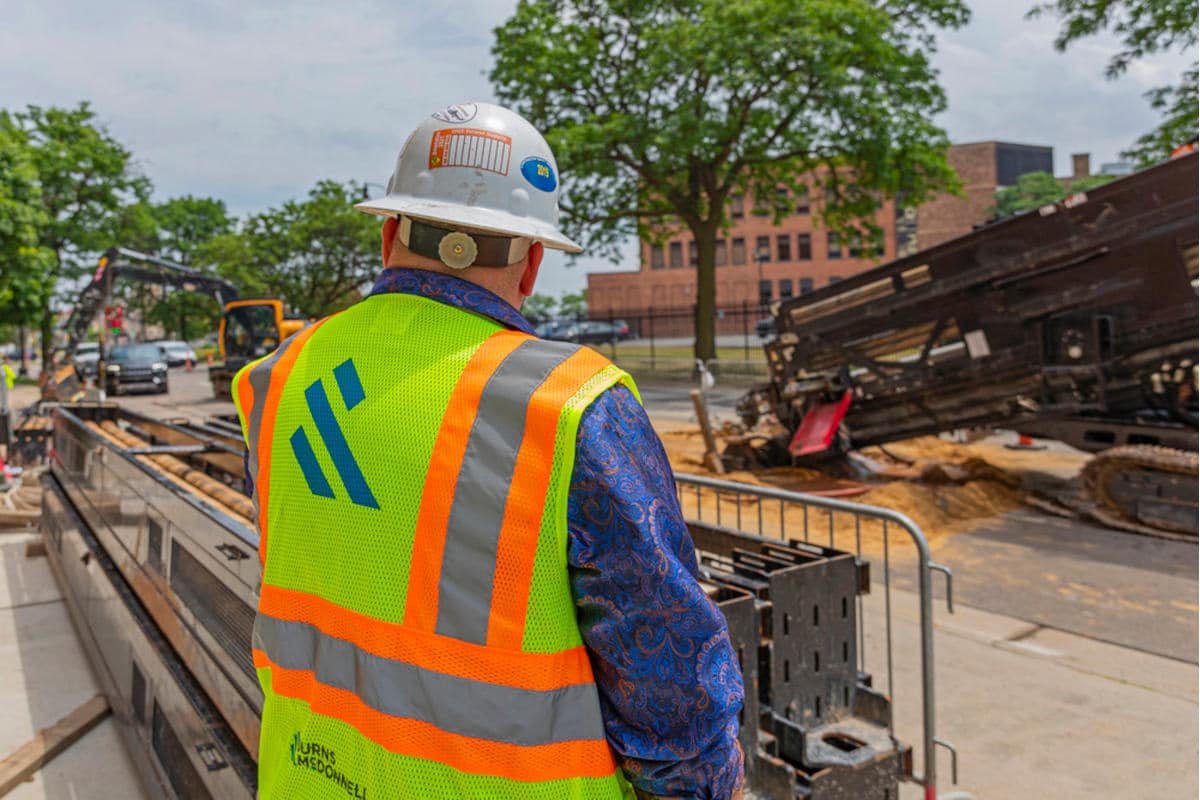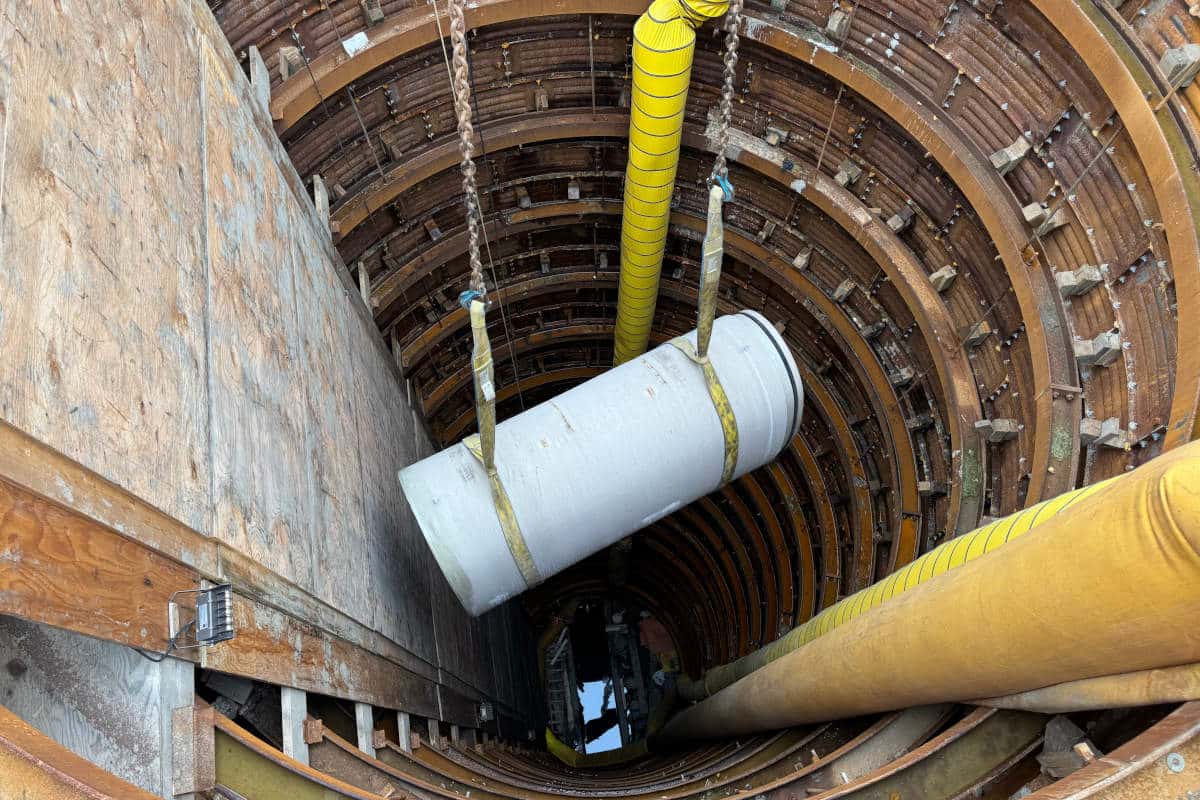Prosperous Pipelines
April 1, 2008
 As the population expands, the need for resources increases year after year. With more homes to heat and customers to serve, the demand for oil and gas pipelines is becoming more and more prevalent as time goes on. 2007 was a thriving year for contractors, vendors and suppliers in the pipeline industry. With more than 5,600 miles of pipe installed throughout the United States last year, 2008 is expected to see even more productivity with numerous projects ready to take shape.
As the population expands, the need for resources increases year after year. With more homes to heat and customers to serve, the demand for oil and gas pipelines is becoming more and more prevalent as time goes on. 2007 was a thriving year for contractors, vendors and suppliers in the pipeline industry. With more than 5,600 miles of pipe installed throughout the United States last year, 2008 is expected to see even more productivity with numerous projects ready to take shape. “Ever since we’ve started keeping records, 2007 has been the third biggest year we’ve had and this year is shaping up to be even larger,” says Bob Johnston, vice president and division manager of Henkels & McCoy Inc., a privately held engineering, network development and construction firm serving the communications, information technology and utility industries. Johnston is also president of the Pipe Line Contractors Association (PLCA).
The expectations of the pipeline market expanding are shared among other industry professionals. With a strong need for pipeline installations in the power industry and municipalities, the market is anticipated to remain bustling throughout the year despite an overall economic downturn in the United States.
“I anticipate growth in the market more than 2007 projects, but possibly at a more conservative pace than previously expected,” says Brian Dorwart, PG, P.E., vice president of Haley & Aldrich Inc., a consulting firm specializing in underground engineering, environmental science and management consulting, based in Boston. “The power industry is still in dire need of fuel for new plants that have been long overdue in construction. These demands for power I suspect have been funded and will make the gas and oil industry relatively recession proof, but expenditures will be at a slower pace as revenues drop below earlier projections.”
Since the pipeline market is growing and keeping personnel on their toes, the industry is experiencing some difficulty at keeping an adequate supply of qualified workers. With some contracting and engineering companies taking on handfuls of projects in 2008, some industry professionals have been stretched to their limits and resources.
“Haley & Aldrich has two transmission projects in New York moving ahead as fast as possible that find themselves constrained by a shortage of engineers and contractors, because of industry demand on the limited experienced resources,” says Dorwart.
David Haynes, manager of Business Development/HDD Division for Mears Group Inc. also adds: “The current pipeline expansion in North America has many contractors running at or near full capacity. With major owners and operators increasing capacity and completing supplier contracts, the anticipated growth to fill the demand for gas and oil will continue to necessitate the upgrading for additional capacity.”
With the increase of available pipeline projects popping up in 2008, the costs of labor and supplies are all expected to rise — upping the cost of the overall project as well.
“The cost for these projects are currently running two to three times higher than originally predicted based on the usual supply demand forces,” says Haynes. “Prices are running slightly higher than last year as supply dwindles and expenses increase.”
People and Places
The pipeline projects that are required throughout the United States and Canada are commanding the attention from contractors such as Sheehan, Otis Eastern, Northern Pipeline, U.S. Pipeline, Delta Gulf, Price Pipeline Construction, Michels, ARB, Minnesota Limited and Henkels & McCoy.
Oil and gas conglomerates including El Paso, NiSource, KeySpan, Empire, Millennium, WillBros, Port Authority of Alaska, Alliance, Kinder Morgan, Spectra, Conocco Phillips and TransCanada, are all main outlets of pipeline work for contractors across North America.
Although pipeline projects are being done throughout the United States and parts of Canada, the majority of work in 2008 is being completed in the midwestern and western regions of the United States. However, as time goes on, Dorwart expects that pipeline work will expand along the West Coast and even South America.
“Currently I am seeing major pipeline work being done in Canada from the resources in Alberta and the Wyoming area that extend toward the eastern market areas,” says Dorwart. “Some gas pipelines are even being converted to oil to provide more transmission capacity. There are still lines being planned and constructed from the Midwest and Canada toward the West Coast to meet China’s demands. The new finds in Brazil will be requiring pipelines in South America as demands in South America increase.”
Demand for Directional Drilling
With the abundance of pipelines being installed, more and more directional drilling technology is being used by contractors looking to complete these projects. Besides the convenience of HDD over open-cut methods, the environmental advantages and longer drives are additional benefits to using the technology.
“Almost every pipeline project now has a directional drill working on it,” says Johnston. “It’s cleaner and more environmentally sound, especially in areas with rivers and major creeks and canals. Most companies prefer to use directional drills in lieu of open-cut methods.”
With pipeline needs increasing and projects becoming larger in scale, directional drilling is becoming a necessity on the jobsite.
“As major projects stretch across the continent, you see a need for more directional drilling. However, given the scope of some of these projects, it is only natural you would see an increase in HDD activity and it will continue in proportion to the magnitude and geographical area the projects cover,” says Haynes.
ISome industry professionals agree that recent projects have been using larger diameter pipe. Johnston notes that the majority of projects his company has been taking on involve the use of 42-in. diameter pipe. As for rigs, Haynes asserts that rigs 500,000 lbs and larger are at a premium in the current pipeline market.
Notable Projects
With the pipeline market expanding and 2008 producing a plethora of projects stretching across North America, more resources will be made available to municipalities and businesses that thrive off of them. Although it is difficult to provide statistics on each one, here’s a glance at some of the projects taking place throughout the year:
- Haynes mentions the Rockies Express Pipeline project, a 1,679-mile natural gas pipeline system stretching from Rio Blanco County, Colo., to Monroe County, Ohio. The $4.4 billion project, which is divided up into three sections — the Entrega, Rockies Express-West and Rockies Express-East — began in February 2006 and is expected to be complete in June 2009.
- Another project in the works is the 2,148-mile Keystone Pipeline Project. This pipeline is being installed to transport crude oil from Hardisty, Alberta, to Wood River and Patoka, Ill., and Cushing, Okla. The project will utilize a mix of pipeline diameters of 30 and 36 in. and is expected to be in service by 2010.
- Kinder Morgan and Energy Transfer are also working on a joint project called the “Midcontinent Express” pipeline, which calls for the construction of 500 miles of various sized pipeline from Bennington, Okla., through Perryville, La., and ending in Butler, Ala. The project is expected to begin in the third quarter of 2008.
Pam Stask is an assistant editor of Trenchless Technology.
| Other Pipeline Projects to Look for in 2008 Gulf South Pipeline began work on its “Southeast Expansion Project” in November 2007, which requires more than 100 miles of 42-in. pipe from Harrisville, Miss., to West Butler, Ala. In Texas, there is a pipeline expansion project (the “Katy Expansion”) that involves more than 30 miles of 42-in. pipe and more than 50 miles of 36-in. pipe for Energy Transfer. The Cameron Interstate Pipeline, which is currently under construction, is 36 miles of 42-in. pipe in southern Louisiana. The pipeline is expected to be in service sometime in 2008. Enbridge’s Waupisoo Pipeline project is a $339 million oil pipeline stretching 239 miles. The pipeline will consist of 30-in. pipe and will extend from the Fort McMurray region to Edmonton. The MinnCan Project, is a $300 million oil pipeline totaling 304 miles. The pipeline will consist of 24-in. pipe and will be used to deliver crude oil from Canada to Minnesota The Columbia Gas Millennium Project, which is scheduled to be completed in late 2008, involves more than 100 miles of 30-in. pipe in New York. |




